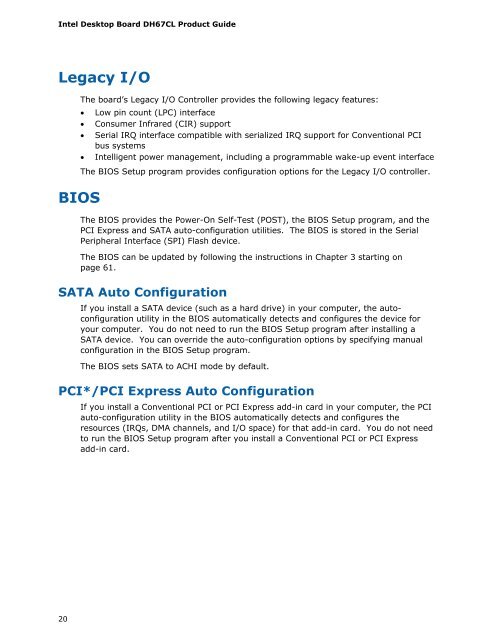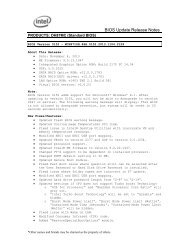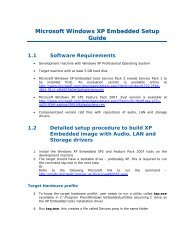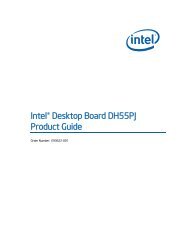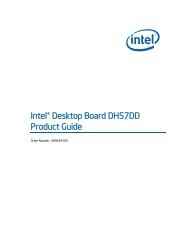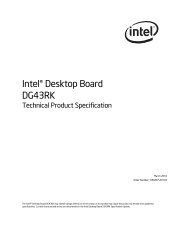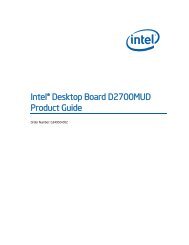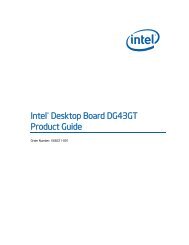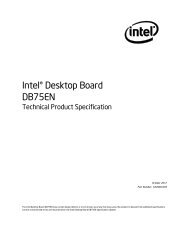Intel® Desktop Board DH67CL Product Guide
Intel® Desktop Board DH67CL Product Guide
Intel® Desktop Board DH67CL Product Guide
You also want an ePaper? Increase the reach of your titles
YUMPU automatically turns print PDFs into web optimized ePapers that Google loves.
Intel <strong>Desktop</strong> <strong>Board</strong> <strong>DH67CL</strong> <strong>Product</strong> <strong>Guide</strong><br />
Legacy I/O<br />
20<br />
The board’s Legacy I/O Controller provides the following legacy features:<br />
• Low pin count (LPC) interface<br />
• Consumer Infrared (CIR) support<br />
• Serial IRQ interface compatible with serialized IRQ support for Conventional PCI<br />
bus systems<br />
• Intelligent power management, including a programmable wake-up event interface<br />
BIOS<br />
The BIOS Setup program provides configuration options for the Legacy I/O controller.<br />
The BIOS provides the Power-On Self-Test (POST), the BIOS Setup program, and the<br />
PCI Express and SATA auto-configuration utilities. The BIOS is stored in the Serial<br />
Peripheral Interface (SPI) Flash device.<br />
The BIOS can be updated by following the instructions in Chapter 3 starting on<br />
page 61.<br />
SATA Auto Configuration<br />
If you install a SATA device (such as a hard drive) in your computer, the autoconfiguration<br />
utility in the BIOS automatically detects and configures the device for<br />
your computer. You do not need to run the BIOS Setup program after installing a<br />
SATA device. You can override the auto-configuration options by specifying manual<br />
configuration in the BIOS Setup program.<br />
The BIOS sets SATA to ACHI mode by default.<br />
PCI*/PCI Express Auto Configuration<br />
If you install a Conventional PCI or PCI Express add-in card in your computer, the PCI<br />
auto-configuration utility in the BIOS automatically detects and configures the<br />
resources (IRQs, DMA channels, and I/O space) for that add-in card. You do not need<br />
to run the BIOS Setup program after you install a Conventional PCI or PCI Express<br />
add-in card.


